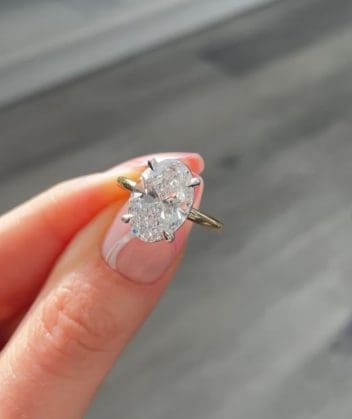
Thanks !
You can pay your premium as monthly instalments or a single annual payment.
$ p/m
($ Total)
Pay your premium
over 12 monthly instalments
$
+ one time setup fee $
Pay annually and save
$ Total
The total includes GST
and government charges
What’s next? You’ll need to provide some documents and photos of your jewellery items
Want to read over the fine print? Check out our PDS here.
Have some questions? We would love to hear from you.

Thank You!
Your application has now
been submitted
Our team will be in contact with you
shortly via phone or email with the
next steps
Have some questions? We would love to hear from you.


Diamonds are considered the most complex substances known to man. However, despite their rated hardness, it is still possible to damage a diamond, especially if mishandled.
This article will review how diamond jewellery or rings can get damaged. Plus, examine ways to protect it.
Diamonds, renowned for their remarkable hardness, possess unique characteristics that make them one of Earth’s most complex natural substances. This extraordinary hardness can be attributed to several factors.
Firstly, the crystal structure of diamonds plays a pivotal role. Each carbon atom in a diamond forms four strong covalent bonds with neighbouring carbon atoms, creating a rigid three-dimensional lattice structure. This arrangement resists external forces and lends diamonds their exceptional toughness.
Secondly, diamonds are formed deep within the Earth’s mantle under extreme heat and pressure conditions. The intense pressure, estimated to be around 725,000 pounds per square inch (psi), compresses the carbon atoms tightly together, reinforcing the strength of the crystal lattice.
Furthermore, the purity of diamonds is crucial to its durability. Gem-quality diamonds are nearly 100% pure carbon with minimal impurities. If imperfections are present, the crystal lattice can weaken, reducing the diamond’s hardness.
In essence, the unparalleled hardness of diamonds and their unique atomic structure, formation process, high purity, and exceptional transparency make them the ideal symbol of enduring love and resilience in the world of gemstones.
Diamond rings, often cherished symbols of love and commitment, can be surprisingly delicate despite their enduring beauty. Below are a couple of factors that can damage a diamond ring.
Impact and Scratches: Though renowned for their hardness, diamonds are not impervious to damage. They can chip, crack, or scratch if subjected to a significant impact. Everyday activities like knocking the ring against hard surfaces can lead to these issues. So, you’d want to be careful with what you do when wearing a diamond ring.
Loose or Lost Diamonds: Improperly secured diamonds can become loose or fall out of their settings. This can occur if the ring’s prongs are damaged, worn, or not regularly checked and maintained. The best way to avoid this is to get the diamond ring examined by a professional every year and probably more frequently as it ages.
Clash with Other Jewellery: Wearing your diamond ring alongside other jewellery, especially those with harder gemstones like sapphires or rubies, can lead to friction and wear over time. The diamonds may get scratched, and the metal may suffer damage.
Chemical Exposure: Exposure to harsh chemicals, such as chlorine in swimming pools or household cleaning agents, can dull the sparkle of diamonds and damage the metal settings. It’s advisable to remove your ring when working with chemicals.
Heat and Extreme Temperatures: Sudden temperature changes or exposure to high heat can affect the structural integrity of the metal and cause it to weaken. This can lead to problems with the setting or even warp the ring.
Resizing Issues: When resizing a diamond ring, the process may weaken the metal or affect the setting’s integrity. It’s essential to hire a reputable jeweller experienced in resizing to avoid potential damage.
Daily Wear and Tear: Over time, the metal in a diamond ring can wear down, particularly in areas exposed to constant friction and pressure, such as the bottom of the band. Regular maintenance can help address this issue. Again, this should be an issue that a jeweller can identify and address before disaster strikes.
Natural Inclusions and Flaws: Some diamonds have natural inclusions or internal flaws, making them more susceptible to damage. Care should be taken to protect such diamonds from additional stress.
Accidental Damage: Accidents happen, and a sudden impact, like dropping the ring on a hard surface or getting it caught on something, can damage both the diamond and the setting.
Neglecting Regular Maintenance: Please have your diamond ring checked and professionally cleaned regularly to avoid unnoticed issues that may worsen over time. Regular maintenance can prevent damage from progressing.
Protecting a diamond ring from damage is essential to ensure its enduring beauty and value. Here are a few tips to protect your diamond rings from excessive damage.
To ensure the longevity of your precious diamond ring, it’s essential to handle it with care have it professionally inspected and cleaned regularly. Finally, consider the protective measures such as the ones discussed above to ensure that the diamond ring lasts for generations. By doing so, you can enjoy your diamond ring’s enduring beauty and symbolism for years to come.